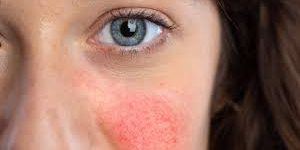It is a chronic skin disease that affects especially the central part of the face, such as the forehead, nose, chin and cheeks, starting with episodes of redness and burning, and then causing inflamed wounds, permanent redness, increased capillaries and edema of the skin. It is also known as rosacea, rose disease and rosacea.
What Causes Roza Disease?
The cause of Roza is not known exactly.
How is Roza Disease Treated?
The most important thing in treatment is to avoid factors that increase clinical symptoms. Symptoms and signs of the disease can be controlled with the use of sunscreen, local and systemic medications and laser treatments. Surgical methods can be used especially in severe cases that cause deformity of the nose and cheeks. Although it is difficult to completely cure Rosa disease, the symptoms of the disease can be kept under control with treatment.
Which Lasers are Used in the Treatment of Roza Disease?
Different laser treatments, gold needle (fractional needle radiofrequency) and intense pulsed light (IPL or BBL laser) systems can be effective especially in the treatment of facial redness and increased capillaries.
Rosacea is usually a long-term condition and can flare up from time to time. Regular skin care and follow-up with a doctor are therefore important. If you have signs of rosacea or your symptoms are worsening, consulting a dermatologist is the best approach.
Is There a Special Diet for Roza Disease?
Although there is no special diet for Roza disease, foods and drinks that increase redness on the face should be avoided. Smoking and alcohol should also be avoided.
What Factors Increase the Clinical Symptoms of Roza Disease?
Food and beverages (hot and cold drinks, caffeinated products, hot and spicy foods, etc.), weather conditions (sun, cold and hot weather, etc.), excessive exercise and psychological stress, cleaning and personal care products and some medications can exacerbate the disease.

